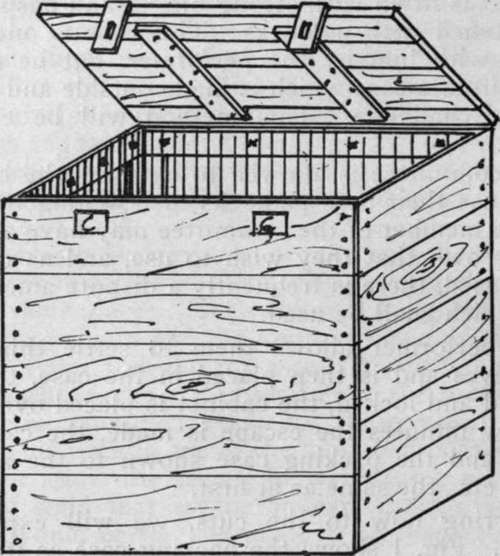The Packing Case
Description
This section is from the book "Secrets Of The Great Mysteries", by Oudini. Also available from Amazon: Secrets Of The Great Mysteries.
The Packing Case
The packing case used in this trick is large enough to hold the performer easily, about three feet each way. It is made of 7/8-inch white pine boards with all joints matched, and is strongly nailed with 8 or 10 penny wire nails. It is fitted with strong hinges and hasps, which are fastened with padlocks. This case is one that is carried with him by the performer, but he can also escape from a case which is made outside and brought in on a challenge. This method will be explained shortly.
The committee is allowed to examine the box, etc., and to use their own padlocks in fastening the hasps. As each member of the committee may have a padlock of their own that they wish to use, and as only two can be used, there is frequently a dispute among them as to which shall be used.
The performer allows them to settle this among themselves and is then placed in the case, the cover is closed and locked, the cabinet is placed over it, and in a few minutes the escape is made, the canopy removed and the packing case shown to the audience, locked, etc., the same as at first.
Referring now to the cuts, we will explain the process. Fig. 1 shows the packing case as it appears open at the commencement of the act. Fig. 2 shows the case closed after the performer has been placed in it, and the padlocks in place. Fig. 3 shows the section of the case wherein the trick lies. This is a section through the front corner of the case, looking down. "A" is the front board of the case on which the locks are placed. "B" the cleat which runs entirely around the top of the case, inside, as shown in the open view, Fig. 1. This cleat is fastened with screws all around, One of which is shown in "C," Fig. 3. There are three screws in each cleat. "D" is the hasp that holds the lock and cover in place, and which are held on by the screws "E," which are really machine screws, but have heads giving the appearance of ordinary wood screws. These screws are fastened on with nuts on the inside of the front boards, and the front cleat has counter sunk holes "R," so as to fit over these nuts and lie close to the case.

Fig. 1.
Continue to:
